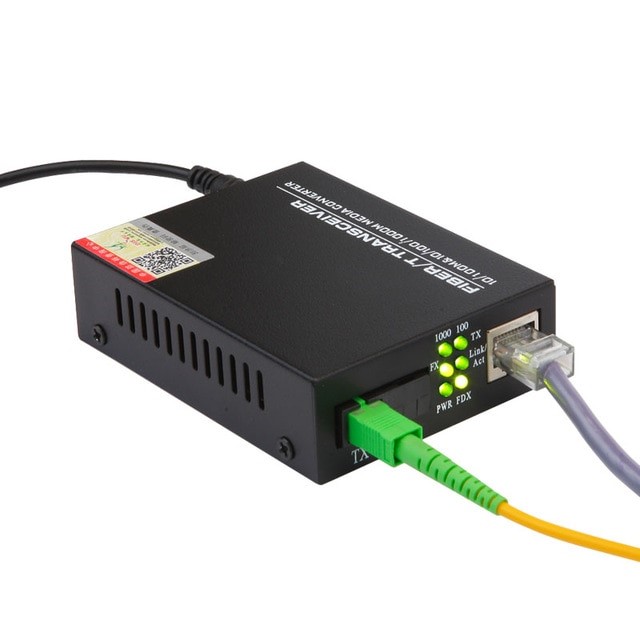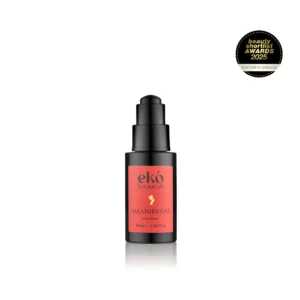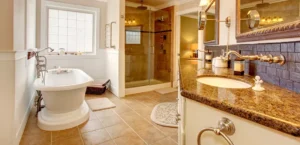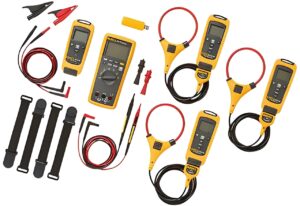
When networks get faster and distances get longer, the question isn’t whether you’ll use optical gear—it’s which pieces and how they’ll fit together. That’s where transceivers and media converters earn their keep. They bridge copper to fiber, scale bandwidth without rip-and-replace, and keep your links clean, predictable, and future-proof. This guide breaks down what they do, how to choose them, and the real-world gotchas that separate a smooth rollout from a long night in the server room.
What They Are—In Plain English
-
Transceivers are small, hot-swappable modules that slide into a switch, router, NIC, or server to convert electrical signals to light (and back). Think SFP/SFP+/SFP28, QSFP+/QSFP28/QSFP56, and QSFP-DD form factors. They define speed (1G, 10G, 25G, 40G, 100G, 200G, 400G), wavelength, and reach over specific fiber types.
-
Media converters are standalone boxes that connect unlike media—usually RJ-45 copper to fiber—and sometimes add features like PoE, management, link pass-through, and extended temperature for industrial sites.
Together, these components let you extend copper LANs across buildings, run fiber to the desk in clean-room labs, backhaul wireless APs and cameras, or light up metro/edge links without swapping your entire switch stack.
Fiber Basics You Actually Need
-
Single-mode (SMF): Long distance (kilometers). Narrow core. Common wavelengths: 1310 nm (short/medium), 1550 nm (long).
-
Multimode (MMF): Short distance (within buildings/campuses). Wider core with types OM3/OM4/OM5 optimized for laser sources.
-
Connectors: LC is the modern default for SFP-class; MPO/MTP handles parallel fibers in QSFP high-speed links.
-
WDM flavors:
-
BiDi (bidirectional): Single strand, two wavelengths (e.g., 1310/1550). Halves your fiber count.
-
CWDM/DWDM: Multiple channels on one pair (or even one strand) for big capacity across distance.
-
Picking Transceivers: A Quick Field Guide
-
Match speed to the port
Your switch/NIC slot dictates the form factor and max speed. SFP+ runs 10G; SFP28 is 25G; QSFP28 covers 100G (and can break out to 4×25G); QSFP-DD pushes 400G+. -
Know the reach and fiber type
-
SR (Short Reach): Multimode, e.g., 10G-SR up to 300 m on OM3 or 400 m on OM4.
-
LR (Long Reach): Single-mode ~10 km at 1310 nm.
-
ER/ZR: 40–80 km at 1550 nm (check dispersion budgets).
-
DR/FR/LR for 100G/400G: Newer naming tied to specific reaches and PAM4 signaling.
-
-
Connector & cabling choices
-
Optics + fiber: Flexible and distance-friendly.
-
DAC (Direct-Attach Copper): Short, cheap twinax up to ~3 m (sometimes 5 m).
-
AOC (Active Optical Cable): Pre-terminated optical cable for 5–30+ m runs with simple plug-and-play.
-
-
DDM/DOM support
Digital diagnostics expose real-time temperature, TX/RX power, and voltage—gold for troubleshooting. -
Vendor compatibility
Some switches enforce “coded” optics. Choose transceivers programmed for your platform (or buy re-codeable units) to avoid link down surprises. -
Environmental rating
-
Commercial (0° to 70°C) for controlled spaces.
-
Industrial (-40° to 85°C) for cabinets, plants, and curbside enclosures.
-
Media Converters: Where They Shine
-
Copper-to-Fiber Uplinks: Extend a 1G/2.5G/10G copper switch to distant IDFs or buildings over SMF/MMF.
-
PoE Edge: Power IP cameras or APs from a copper switch on one side and fiber on the other (PoE media converters simplify power and distance).
-
Redundancy & Migration: Drop a converter to bridge legacy copper gear into new fiber backbones while you phase in optical switches.
-
Industrial & Outdoor: DIN-rail, extended temperature, and dual DC inputs keep links alive in harsh environments.
Features That Matter
-
Link Fault Pass-Through (LFP): If fiber fails, the copper port drops too, signaling upstream devices instantly—key for failover.
-
Managed vs. Unmanaged: Managed converters provide SNMP, VLAN tagging, loop prevention, and remote diagnostics.
-
Rate Conversion: 10/100/1000 autosensing or 1G⇄10G conversion for mixed estates.
-
Power Options: AC adapters, redundant DC inputs, PoE passthrough; mount considerations for racks or DIN rails.
Designing the Link: Power Budget Without the Jargon
A fiber link must deliver enough light to the receiving end:
-
Tx Power – (Fiber Loss + Connector/Splice Loss) ≥ Rx Sensitivity
-
Typical loss: ~0.4 dB/km on SMF @ 1310 nm, ~3 dB per MPO trunk if multiple connectors, ~0.2–0.5 dB per LC connector.
-
Add margin (3 dB is a common rule) for aging and temperature swings. If you’re close to the limit, consider higher-power optics or cleaner paths (fewer connectors, better polish).
Common Scenarios (and What to Choose)
-
Campus Building Uplink (1–10 km)
-
10G-LR SFP+ over single-mode, LC-LC patching. Include DOM monitoring and LFP on any media converters.
-
If fiber is scarce, look at 10G BiDi optics (one-strand).
-
-
Warehouse Edge with Cameras/APs
-
PoE media converters at remote cabinets; single-mode for long runs, industrial rating for temp swings.
-
Prefer managed units for SNMP visibility.
-
-
High-Density Core (Leaf/Spine)
-
100G QSFP28 DR/FR/LR between spines; use breakouts (4×25G) to leafs where appropriate.
-
AOCs for neat, short inter-rack runs; MPO trunks for structured cabling.
-
-
Lab/Editing Suites (Short, Fast, Clean)
-
SFP28 25G-SR over OM4 within a room or row; DACs for adjacent gear to save cost and power.
-
-
Metro/Carrier Hand-off
-
DWDM with mux/demux for multiple wavelengths on the same pair; add EDFA amplifiers if spans push limits.
-
Budget carefully for dispersion on 40/100G over long spans.
-
Troubleshooting Cheatsheet
-
Link up but flapping: Clean connectors (lint-free swabs + isopropyl), verify bend radius, check DOM levels.
-
No light received: Confirm matching wavelength (1310↔1310), polarity on duplex pairs (TX↔RX), and BiDi pairings (1310/1550 vs. 1550/1310).
-
Short MMF runs, weird errors: Use proper patch cords (OM3/OM4) and disable inappropriate long-reach optics that may overload receivers—add attenuators if required.
-
DAC not linking: Cable length over spec or port set to wrong speed; try a certified AOC or discrete optics.
Security and Resilience Tips
-
Physical security: Lockable panels and armored patch for public risers.
-
Loop prevention: Managed converters that support STP/RSTP or simple loop-guard features.
-
Redundant paths: Diverse fiber routes and dual transceivers with link-state tracking; consider BFD on routed links for quick failover.
-
Monitoring: DOM thresholds, syslog traps, and SNMP to your NMS; track TX/RX drift before outages happen.
Cost & Lifecycle Considerations
-
CapEx vs. OpEx: Cheaper optics can cost more in downtime; pay for compatibility coding and solid QA.
-
Power draw: High-speed optics (PAM4, 100G/400G) consume more—plan rack power and thermal headroom.
-
Spares strategy: Keep a labeled bin of common SR/LR and a couple of BiDi units; store dust-capped and tested.
-
Standardize: Pick a transceiver family and media converter line across sites to simplify firmware, spares, and training.
Quick Buyer’s Checklist
-
Speed & form factor match (SFP+/SFP28/QSFP28/QSFP-DD)
-
Fiber type and reach (SR, LR/ER/ZR; BiDi/CWDM/DWDM options)
-
Connector type (LC, MPO) and cable inventory alignment
-
DOM/Diagnostics support and management (SNMP/syslog)
-
Environmental rating, power options, and mounting
-
Vendor coding/compatibility and warranty
-
Link-budget headroom (≥3 dB margin)
-
Documentation labels for both ends (save your future self)
Bringing It All Together
Transceivers and media converters aren’t glamorous, but they’re the reason your network scales cleanly from copper closets to optical cores—and keeps scaling as demands grow. Choose modules that match your speed, fiber, and distance requirements; use managed media converters with LFP where uptime matters; design with diagnostics and margin; and standardize to reduce complexity over time. Do that, and expansions get easier, outages get rarer, and your links behave the way the diagrams promised.
If you want a second set of eyes on optics selection, fiber types, link budgets, and deployment checklists, Tecisoft can help you specify the right transceivers and media converters for your environment, pre-stage and label assemblies, and deliver a tidy, documented rollout that’s fast today and future-ready tomorrow





